An insulated jacket is a winter essential if you’re heading for the hills or the open countryside.
It will keep you warm when the temperature drops and could be a lifesaver in protecting you from the elements.
Insulated jackets work by trapping air, which retains body heat and stops the body cooling down too quickly in cold weather. Traditionally, down-filled jackets dominated the market. Down from either ducks or geese have excellent insulating properties for its weight. But, it quickly loses its ability to keep you warm when it gets wet, which is a major problem in the UK with its notoriously damp climate. There’s also the problem of down being a by-product of poultry or other food production which will be anathema to many people and completely unacceptable for vegans.
There are schemes to certify down as being ethically sourced, in particular to ensure it was not obtained from live plucking, and some of the jackets in the test use recycled down. Recent developments also include hydrophobic treatments for the down, which help prevent or at least decrease the amount the down collapses when wet, thus retaining most if not all of the insulating properties.
It should be recognised that down can also become damp or wet from the inside, due to perspiration from the wearer – an obvious possibility when slogging up a mountain.
Down often comes with a fill-power rating: this is the volume in cubic centimetres a gram of lofted down will fill. Put simply, the higher the fill-power, the better the insulating properties for its weight. But the actual amount of warmth provided will also depend on how much down is blown into the jacket’s baffles – the stitched channels that retain it in place.
We’ve seen insulated jackets described as ‘stopping jackets’, that is, a jacket to slip on when you’ve stopped: for lunch, to belay, to keep you warm at camp, to admire the view, take a few photographs or even if you have a mishap leading to an injury that prevents you continuing. But forking out on a pricey jacket to use for only a few minutes might seem over the top.
So we’ve tested the jackets on how well they perform while on the move, coping with the build-up of heat inevitable when on an ascent, as well as in more stationary situations.
The other main insulating material used in jackets is polyester, usually in woven sheets but sometimes, formed into ‘blown’ filaments that mimic the fill properties of down.
Apart from the ethical aspects of synthetic filling, its other main advantage is that when damp it largely retains its ability to insulate, as it doesn’t collapse like down, leading to the loss of loft – the ability to keep the air spaces that actually provide the insulation.
It’s also usually cheaper, but heavier. Another drawback is the increasing realisation that the world’s oceans are slowly filling up with microplastics, some of which come from the tiny fibres released when polyester and other synthetic materials are washed. Some ‘ingredient’ brands are working on the problem by producing synthetic insulation that reduces the release of microfibres and, in some cases, recycled filling that breaks down in ocean and landfill environments.
Some jackets include both down and synthetic insulation to use the best properties of each type of material.
Most insulated jackets aren’t designed to be completely waterproof, though one of the garments in the test is. Usually, they will have a durable water resistant treatment applied to the face fabric to shed a shower or two or light snowfall.
The jackets in the test were assessed in conditions ranging from damp and cool to cold and dry, with a few forays into days of deluge where appropriate.
Alpkit Filoment Hoody
Price: £139.99
Colour: blue
Weight: 425g
Material: recycled nylon
Insulating material: 630 fill-power recycled down
Country of manufacture: China
Women’s version: yes
Sizes: men’s S-XXL; women’s 8-18
This good-value down jacket from Alpkit uses recycled material in both its fabric and filling.
The Filoment Hoody among is the lightest in the test and packs down very small so won’t add much to your rucksack burden.
The Alpkit jacket has two zipped handwarmer pockets plus a good sized external chest pocket. Inside there are two ‘dump’ pockets – open topped to slip items into. These are big enough to hold a laminated OS map.
The baffles are fairly narrow and at the shoulder area are arranged in the opposite, vertical direction.
Insulation is from 630 fill-power recycled down, which is Recycled Claim Standard certified.
The Filoment’s nylon material is also recycled and has a PFC-free durable water resistant treatment to repel a shower or two. It also helps stop perspiration penetrating the down a little and affecting its loft and therefore insulating properties.
The hood worked well and has an elasticated band at the front, along with a rear halo-type volume adjuster with spring toggle to keep it tensioned. The cuffs are elasticated and the jacket has drawcord adjustment in its hem, with spring toggles, which enable it to be cinched in to keep out draughts. The sleeves are articulated.
The hood stayed in place when walking into a headwind and also turned well with the head when cinched in. The hood is designed to be worn under a helmet if needed. It was comfortable in use.
The main zip is backed by a baffle to keep out wind and there’s a chinguard strip at the top of the zip for comfort.
Warmth was good and the Alpkit jacket resisted snow and sleet showers quite well. The jacket also blocked the wind well. Overall, the jacket was comfortable and didn’t restrict movement.
The Filoment represents good value for money for a down jacket and has good green credentials. It’s lightweight but still provides a good level of warmth.
Best uses: winter walking and hillwalking; mountaineering; climbing; urban.
Warmth 30/40
Packability 28/30
Windblocking 8/10
Quality 7/10
Value for money 9/10
Total score: 82/100
Berghaus Arkos Reflect Down Jacket
Price: £250
Colour: red/dark blue
Weight: 725g
Material: polyamide
Insulating material: 700 fill-power water-resistant down/Hydroloft synthetic
Country of manufacture: Vietnam
Women’s version: no
Sizes: XS-3XL
The Arkos combines water-resistant down filling with Hydroloft, a polyester filling manufactured to mimic down, but which does not absorb water.
Add in a layer of Reflect heat-reflecting mesh and the Berghaus jacket is clearly designed for maximum heat retention. It looks quite bulky but is reasonably lightweight, tipping the scales at a little over 700g for a large-size.
The brand says the Reflect layer improves warmth by up to 20 per cent.
Compressibility is good too, and the jacket comfortably fitted into one of our 5 litre stuffsacks. The baffle segments on the chest area are quite wide but the insulation stayed in place well. Part of the back has narrower baffles.
The shell of the Arkos is lightweight nylon Pertex Quantum. The main zip is backed by a baffle with microfleece chin guards at the top, and the jacket has two zipped handwarmer pockets, half-lined with microfleece. These are positioned just clear of the harness or rucksack hipbelt area.
Inside the jacket there’s a good-sized zipped pocket. The hem has a drawcord with single spring toggle adjustment and the sleeve cuffs have light elastication.
The hood has rear halo-style volume adjuster with a spring toggle to secure the cords in place. There’s no adjustment at the front of the hood, but it is lightly elasticated and the hood has a semi-stiffened peak. The jacket also has a rear neck baffle to help warmth in that area.
The hood was comfortable in use and is big enough to use over a helmet. It stayed in place well in winds and turned with the head.
The 700 fill-power duck down is Responsible Down Standard certified; the jacket’s durable water-resistant treatments are PFC-free and the Arkos contains bluesign-certified fabrics.
The jacket has articulated sleeves and didn’t restrict movement when reaching up.
Overall comfort was good, with the soft shell fabric and filling giving it a snug feel. Warmth was very good, which makes the Berghaus Arkos Reflect a good choice when the temperature drops very low. We used it in sub-zero conditions with ice and snow prevailing and the jacket provided good protection. Windblocking was very good too.
Moving quickly uphill in the Arkos did prove a warm experience, but the addition of the synthetic Hydroloft layers and hydrophobic down treatment meant the effect on the jacket’s insulating properties from perspiration wasn’t significant. The shell fabric dealt with light drizzle showers and snow without affecting warmth.
Berghaus says the Reflect technology and Hydroloft body mapping distributes body heat more efficiently and the Arkos certainly felt warm during stops on our outings. For climbers spending time belaying the jacket is ideal. We also found the Berghaus jacket worked well while walking in cold conditions – in sub-zero temperatures it provided good comfort and blocked the wind comprehensively. The jacket is also suitable for even lower temperatures, while offering good packability and a fairly light weight.
Best uses: winter hillwalking and mountaineering; winter climbing, camping.
Warmth 35/40
Packability 25/30
Windblocking 9/10
Quality 8/10
Value for money 8/10
Total score: 85/100
Jack Wolfskin Brecon Range Insulated Jacket
Price: £300
Colour: blue/black
Weight: 1,142g
Material: polyamide
Insulating material: PrimaLoft Bio
Country of manufacture: Vietnam
Women’s version: yes
Sizes: men’s S-XXXL; women’s XS-XXL
The Brecon Range combines the properties of a waterproof shell with an insulated jacket which is ideal in typical UK cold, wet conditions.
The Jack Wolfskin jacket is essentially a traditional waterproof with all the features you would expect in such a garment, but with a layer of synthetic insulation to keep you warm when the temperature drops.
The jacket has a robust feel to it. Its face fabric is ripstop nylon Texapore which has a good 20,000mm water column waterproof rating and good breathability. On the shoulders, part of the hood, sleeves bottom and lower back is a further Texapore material giving extra durability.
There’s a good thick insulation layer throughout, made from PrimaLoft Silver Insulation Bio, which is 100 per cent recycled polyester and manufactured so its fibres break down after a certain period in the ocean and landfill.
Styling is traditional, with the jacket reaching mid-thigh level. The waist can be cinched in using the drawcords concealed in each of the two zipped handwarmer pockets, which have microfleece lining and storm flaps covering the zips.
The main zip, which has double pullers, is covered by twin storm flaps, one of which has a rain gutter with the other secured in place by short strips of hook-and-loop fabric, plus a press-stud at top and bottom. There’s a microfleece-lined chin guard at the top.
The hem has drawcord adjustment, secured by two spring toggles. The sleeves are articulated to allow easy movement, and the cuffs have hook-and-loop adjustment strips. Each also has an inner elasticated cuff liner to help keep out draughts. There are good-length pit zips with two pullers, so they can be opened from either end to provide ventilation.
These worked well to provide cooling air when heading uphill. The zips are protected by storm flaps which keeps the wind out when they are closed. There was no ingress of rain or snow when they were open.
The hood is quite large, big enough to accommodate a climbing helmet. There’s a rear halo volume adjuster with spring toggle protected by a small cowl, which made it slightly more difficult to access while wearing gloves. The hood also has front adjustment via twin shockcords with concealed spring-buttons to hold them in place. Excess is tethered to stop it whipping around in wind. The hood also has a semi-stiffened peak.
The hood is warm and cinched well around the head and face, keeping out headwinds, though the stiff fabric of the jacket meant it only partly turned with the head.
The Brecon Range jacket has an external zipped chest pocket as well as its two handwarmer pockets. Inside the jacket there’s also another smallish zipped pocket.
Green credentials are good thanks to the recycled insulation content, which is biodegradable, and PFC-free waterproofing.
The Jack Wolfskin jacket is comprehensively equipped and was comfortable in use. The combination of warmth and full waterproofing was very useful on typical British winter days when cool conditions were accompanied by rain, sleet and snow.
It feels very robust, with abrasion-resistant fabric on high-wear areas. The jacket kept the weather out and retained its warmth even if perspiration built up when working hard uphill. The pit zips were effective in providing cooling air.
It became our go-to choice on showery cold days or even when torrential rain accompanied cool winds.
The main drawbacks are the weight and lack of packability of the Brecon Range Insulated Jacket. We managed to pack it down into about 6 litres in a stuffsack. It’s also pricey but for its tag you get full protection on the hills in the worst weather the UK climate can throw at you.
Quality is also good.
Best uses: winter hillwalking; winter walking; winter mountaineering; urban.
Warmth 34/40
Packability 22/30
Windblocking 9/10
Quality 8/10
Value for money 7/10
Total score: 80/100
Keela Talus Primaloft Jacket
Price: £139.95
Colour: blue
Weight: 574g
Material: nylon; side panels 49 per cent polyester, 40 per cent nylon, 11 per cent Lycra
Insulating material: Primaloft Gold
Country of manufacture: not stated
Women’s version: yes
Sizes: XS-2XL
The Talus jacket uses Primaloft Gold synthetic insulation which has the advantage of retaining its properties even if it gets damp.
The Keela jacket has a soft feel to its fabric, which makes for good comfort. It also has stretch panels on its sides, which are backed with fleece material. The panels allow for good mobility when reaching up and also help keep the jacket snug to the body. The Talus is low bulk and has a fairly athletic cut, which we found good for more active days on the hills.
There’s a little less insulation in the sleeves, allowing good movement.
The main zip has a storm flap backing it, helping keep out the wind. There are two zipped handwarmer pockets with half-lining in microfleece. The Keela Talus also has an external zipped chest pocket, along with a second zipped pocket inside the jacket.
The hem has a drawcord with twin spring toggles for cinching it in to help keep out the wind. The jacket’s sleeves are articulated and have elasticated cuffs.
The hood is a good size and will accommodate a climbing helmet. It has a rear halo volume adjuster as well as twin front drawcord adjusters. All have spring toggle locks. When cinched, it kept out headwinds well and also turned well with the head. It has a wired peak which helped a little in keeping out the weather.
The Talus Primaloft Jacket provided a reasonable warmth for a low-bulk garment. Windblocking was quite good too and there was no marked discernible deterioration in insulation when the synthetic filling became damp, either from internal perspiration or external precipitation. The shell fabric has some water resistance, though it won’t keep out persistent rain.
Packability was quite good for a synthetic insulated jacket, and it fitted easily into a 5 litre stuffsack. Weight was middling.
The Keela jacket is available at a good price, giving reasonable warmth, and is especially suited to the UK’s damp climate and to those wanting to push the pace on the hills.
Best uses: winter hillwalking; winter walking; walking in cool damp conditions; urban.
Warmth 29/40
Packability 25/30
Windblocking 7/10
Quality 7/10
Value for money 8/10
Total score: 76/100
Mammut Broad Peak IN Hooded Jacket
Price: £250
Colour: green
Weight: 387g
Material: polyamide
Insulating material: 800 fill-power down
Country of manufacture: China
Women’s version: yes
Sizes: men’s S-3XL; women’s XS-XXL
The Mammut jacket is the lightest in the test and uses 800 fill-power goose down to provide good insulation.
The shell fabric is Pertex Quantum polyamide manufactured with the brand’s Y Fuse fabric technology, with filaments interlocking to provide better water-beading and proofing, according to Pertex.
The baffles are fairly narrow and kept the down in place well. For its weight, the Broad Peak IN Hooded Jacket provides good warmth. Windblocking was good too.
The main zip has a storm flap backing to enhance draughtproofing, and there’s a soft microfleece chin guard strip at the top. The zip has double pullers, so can be opened from the bottom – useful if adjusting layers underneath for example.
The jacket’s hem has drawcord adjustment, with a single spring button to lock it. The sleeves have elasticated cuffs.
There are twin zipped handwarmer pockets, the right-hand one of which doubles as a stuffsack, with a short webbing hanging loop. When packed up and zipped up it makes for a neat pack of about two litres.
There’s also a zipped chest pocket protected by a flap of the jacket’s insulation.
The hood is a simple design with no adjustment. It’s large enough to use while wearing a helmet. When used without a helmet, the lack of the ability to cinch it in meant the hood did move back in a headwind, but stayed up. It didn’t move with the head while not wearing a helmet.
The simple design and good-quality down, combined with the 20 denier Pertex Quantum fabric, has enabled Mammut to keep weight to a minimum in the Broad Peak, while maintaining good insulation. The outer fabric will repel a little precipitation, though the warmth of the Mammut jacket did mean there was a build-up of perspiration inside while working on prolonged uphill sections.
Quality of the Broad Peak IN Hooded Jacket was good, which is reflected in its price. Comfort was good and the Mammut jacket was reassuringly warm on the hill.
Best uses: winter climbing, winter mountaineering, winter hillwalking, camping.
Warmth 32/40
Packability 29/30
Windblocking 8/10
Quality 8/10
Value for money 7/10
Total score: 84/100
Outdoor Research Helium Down Hoody
Price: £200
Colour: blue/grey
Weight: 433g
Material: nylon
Insulating material: 800+ fill down
Country of manufacture: Bangladesh
Women’s version: yes
Sizes: men’s S-XXL; women’s XS-XL
The Helium Down Hoody is another lightweight jacket that uses down as its insulation – this time 800+ fill-power responsibly sourced goose down.
The Outdoor Research hoody also uses two technical Pertex fabrics in its shell. The main body is ripstop Quantum nylon, while the hood, shoulders and upper arms are made with Pertex Shield. Both fabrics use Diamond Fuse filaments designed to lock together for better windblocking and to enable unfettered lofting of the down filling.
The Shield fabric also offers waterproofing in the upper areas of the jacket, along with better abrasion resistance in parts of the hoody likely to encounter more wear.
The 800+ fill-power down provided good warmth without too much bulk, and the jacket was among the three lightest in the test. Packability was good too, and the Outdoor Research jacket can be stuffed into the left-hand pocket which as a short loop and hanging clip. Packed size is about 2 litres.
The pocket is one of two zipped hand warmers, which are half lined with soft tricot fabric. The jacket also has a similarly lined zipped chest pocket and inside the hoody there are two large zipless stash pockets, the left of which has an upper retaining section that allows longer items to be kept in place. These pockets are big enough to accommodate an OS map.
The jacket has fairly narrow stitched-though baffles which kept the down in place well. The Pertex Shield fabric in the upper sections are overlaid on the baffled compartments so there’s no seeping through of water.
The main zip, with a single puller, has a narrow storm flap backing it and there’s a narrow soft chin guard strip.
The jacket’s hem has drawcord adjustment with a single spring toggle lock.
The hood has a single rear halo adjuster with spring toggle locking. It turns reasonably well with the head when cinched in and stayed in place in a headwind and wrapped nicely round the face without feeling too tight. It’s big enough to use with a climbing helmet.
The Outdoor Research jacket was warm and blocked the wind well. It was comfortable in use, with a fairly snug fit, but didn’t restrict movement when reaching up.
The Pertex fabric on the upper panels gave these a very durable feel and protected the garment well against rubbing from rucksack straps, grazing against rock and other hazards en route. It did offer protection against rain and snow but, in our experience in the UK, rain and snowfall rarely happen on dead calm days so tend to be blown at you, so the chest is an area that takes a lot of the weather battering, and this area has just the normal Quantum fabric, which doesn’t shed precipitation as well.
That said, it’s useful to have some protection against rain and, particularly, driven snow, as down will collapse to some extent when it gets wet, and the insulation value diminishes.
Quality of the Outdoor Research Helium Down Hoody was good and the jacket felt durable. The brand said its down has passed rigorous standards for responsible sourcing.
The colours in our jacket were from an early production sample and will vary from those on sale now.
Best uses: winter climbing, winter mountaineering, winter hillwalking, climbing, camping.
Warmth 33/40
Packability 29/30
Windblocking 8/10
Quality 8/10
Value for money 7/10
Total score: 85/100
Páramo Torres Activo Jacket
Price: £138.76
Colour:
Weight: 535g
Material: polyester
Insulating material: Nikwax Analogy Insulator
Country of manufacture: Vietnam
Women’s version: yes
Sizes: men’s S-XXL; women’s XS-XL
The Páramo jacket is, as its name suggests, designed for active sessions on the hills and in the countryside.
The fabric is the brand’s soft-feeling polyester facing, and uses Nikwax Analogy Insulator synthetic filling for warmth.
The advantage of using synthetic insulation is its ability to continue keeping you warm even when it’s wet, and Páramo says the Torres Activo Jacket can be used either as a stand-alone outer layer or put on over a waterproof layer to provide extra warmth. But polyester filling isn’t as light or as packable as down and the Páramo jacket is middling for weight and stuffs into its own inside pocket, which has a hanging loop, with a volume of about 3 litres.
Unlike down jackets, the insulation isn’t blown into baffle compartments, so the design is plainer, with fewer seams. The Torres Activo has a drawcord adjusted hem with two locking spring toggles.
The sleeves are articulated and have hook and loop strips for adjustment. Mobility is good and the jacket didn’t impede movement when reaching up. The cut of the jacket generally made it good for use in more active pursuits.
The jacket has two good sized external zipped pockets, set high and at the edge of the chest, out of the way of the hip belt and harness area. There’s also an inside zipped pocket, big enough to take an OS map and which, as mentioned, can be used as the jacket’s stuff sack.
The hood is a good size too, and will accommodate a climbing helmet. It has a semi-stiffened peak and rear halo adjuster along with two front drawcord adjusters with spring toggle locks and internal tethering for excess cord. The hood worked well, turning with the head when cinched, and it was possible to get a good snug fit around the face when walking into a headwind.
The jacket’s main zip has a fairly small single puller which was quite difficult to operate while wearing gloves. The inside pocket’s zip puller was also small, but the two external pockets had pullers with a bigger tab which was easier to use with gloves.
The Páramo jacket felt very comfortable in use and, despite its lack of bulk, provided good windblocking. It wasn’t as warm as most of the down jackets but worked well when on the move, giving just the right amount of insulation on cold days without the risk of overheating.
Quality was good and the synthetic insulation has 55 per cent recycled content.
The Torres Activo was ideal in situations such as hill ascents in cold weather, where you need warmth without the risk of the jacket becoming too warm. Even at rest on the hill, the Páramo jacket provided a good amount of insulation from the wind and cold. It resisted a shower or two or rain and snow without any deterioration in its warming properties.
Best uses: winter hillwalking, spring and autumn hillwalking, climbing, mountaineering, scrambling, camping
Warmth 29/40
Packability 25/30
Windblocking 8/10
Quality 8/10
Value for money 7/10
Total score: 77/100
Rab Microlight Alpine Jacket
Price: £195
Colour: red
Weight: 480g
Material: polyamide
Insulating material: 700 fill-power hydrophobic down
Country of manufacture: Indonesia
Women’s version: yes
Sizes: men’s XXS-XXL; women’s 8-18
Rab has updated its Microlight Alpine Jacket, which now has Global Recycled Standard-certified recycled down and fully recycled polyamide shell and lining.
The jacket has zoned insulation, with wider baffles in the main areas of the front and back of the garment and sleeves, and narrower baffles at its sides.
The cut is normal, and allowed good movement, with no riding up when reaching up on the hill. The insulation lofted quickly and well and provided good warmth. Comfort was good.
The main zip is backed by a storm flap and there’s a good width microfleece chin guard on each side at the top. There are two zipped handwarmer pockets set well to the sides of the jacket, and a zipped good-sized chest pocket.
The hem has drawcord adjustment with twin spring toggles to keep out updraughts. The hood covers the head well and extends well around the face. It will accommodate a climbing helmet – just. The rear of the hood has elasticated strips to keep it snug to the head and at the front there are twin shockcords for adjustment with friction toggles and tethering for excess cord. The peak is wired.
The sleeves have elasticated cuffs.
The Microlight Alpine comes with a stuffsack with drawcord closure and packed down well to about 2.5 litres.
The Rab jacket was comfortable on the hill and provided good warmth. The baffles allowed quick lofting of the down and the hydrophobic properties of the filling helped minimise the effects of moisture on its warmth. The shell fabric has durable water-resistant treatment, which dealt with the odd shower or two.
It has a good, simple design that performed well in the cold.
The Microlight Alpine gains extra green credence with its recycled content, both in the down and the shell and lining, and the down has GRS certification.
Best uses: winter climbing, winter mountaineering, winter hillwalking, climbing, camping.
Warmth 31/40
Packability 28/30
Windblocking 7/10
Quality 8/10
Value for money 7/10
Total score: 81/100
Snugpak SJ12 jacket
Price: £189.95
Colour: black
Weight: 1,180g
Material: nylon
Insulating material: Softie Premier Härdi synthetic
Country of manufacture: UK
Women’s version: no
Sizes: XS-XXL
The SJ12 is Snugpak’s warmest winter jacket and uses the brand’s Softie Premier polyester insulation, sourced from Swiss firm Härdi, with the jacket manufactured in Snugpak’s Yorkshire factory.
In common with its sleeping bags, Snugpak gives the SJ12 a temperature rating, and says the jacket will keep you comfortable in conditions as low as -15C.
That insulation pushes the jacket’s weight up to more than a kilo, and the SJ12 is quite bulky.
Its quilting runs diagonally on the front, back and sides of the jacket, with plain sections on the shoulders and sleeves. The shell fabric is the brand’s ripstop Paratex Micro nylon, which feels robust. It has a durable water resistant treatment which shed showers while out on the hill.
Putting on the Snugpak jacket, its warmth is immediately evident. It does feel like you’re wearing a sleeping bag on your torso and it certainly kept the cold out on test days when the temperature dropped below zero. Although it has a bulky feel, movement wasn’t impeded when reaching up on more technical routes.
The jacket is cut fairly long and has a low dropped hem at the rear, which provides warmth under the body when sitting on it.
The SJ12’s main zip has double pullers and there’s a wide storm flap behind it, which kept out the wind. The hem has drawcord adjustment, with twin spring toggle locks. The sleeves have a slight articulation and there’s an internal elasticated section at the cuffs. This is set back from the end of the sleeves quite a bit and worked well at keeping the wind and draughts out. As a nod to Snugpak’s military clientele, the sleeves each have soft hook-and-loop patches to which badges can be attached.
There are two zipped handwarmer pockets, plus and internal zipped chest pocket, which is a good size, large enough to take an OS map.
The collar is well insulated and seals well around the neck, giving a cosy feel and keeping out the weather. The hood is described by as a roll-away type. It’s fairly short and leaves quite a bit of the face uncovered, and there’s no peak to stop rain drips or wind-driven weather, but it does have a rear halo adjuster with spring toggle, and two front adjusters, again with spring toggles.
On really cold days, the Snugpak SJ12 was unbeatable for keeping the user warm. The thick synthetic insulation worked well, and damp conditions didn’t affect its properties. When heading swiftly uphill, there was inevitably a build-up of perspiration inside the jacket, though this did dissipate quite well when stationary.
The lining is comfortable and, though the jacket initially feels bulky, there was no restriction in movement.
The styling isn’t overtly ‘outdoorsy’ and the jacket doesn’t look out of place in urban settings when the snow’s falling and the mercury is dropping.
The SJ12 doesn’t pack down very small, but comes with a stuffsack with mesh bottom and drawcord fastening. In the sack, it packs to the size of a medium sleeping bag.
For less active outings in very cold weather, the Snugpak jacket was a good choice. The insulation worked well when the temperature plunged into the minus figures and the SJ12 blocked wind very well, while repelling rain and snow showers. Price is competitive for a UK-produced jacket with such warmth properties.
Drawbacks are its weight and lack of packability.
Best uses: winter walking, urban outings, winter stationary activities such as angling, birdwatching, camping.
Warmth 39/40
Packability 17/30
Windblocking 9/10
Quality 7/10
Value for money 8/10
Total score: 80/100
Top performers in the test were the Berghaus Arkos Reflect Down Jacket and the Outdoor Research Helium Down Hoody, both of which rely on down for their insulation, though the former does also have synthetic content.
Both have innovations that help keep the wearer comfortable in sub-zero temperatures. The Berghaus jacket was the warmest (mainly) down garment.
The Keela Talus and Páramo Torres Activo are both good choices if you want a jacket with synthetic filling that won’t be affected by damp or wet conditions. They’re also useful if you want a top that won’t cause overheating if you’re undertaking particularly active hill routes.
The most versatile was the Jack Wolfskin Brecon Range jacket, which gave complete protection against rain and snow and also provided some of the best warmth. On the numerous outings in typical British weather, it performed very well and also has good sustainability features.
For out-and-out warmth, the Snugpak SJ12 was the runaway winner, though it does feel bulky and a little unyielding if your outing is more active.
The choice of jacket depends on the use you want to put it to, mainly. Maximum warmth isn’t necessarily what everyone is seeking, though if you’re heading for the heights, it may be. Budget is another deciding factor and, generally synthetic-filling works out cheaper and is less rain-affected. The Alpkit top represents good value for a down jacket.
- All the jackets in the test were supplied to grough by the brands.
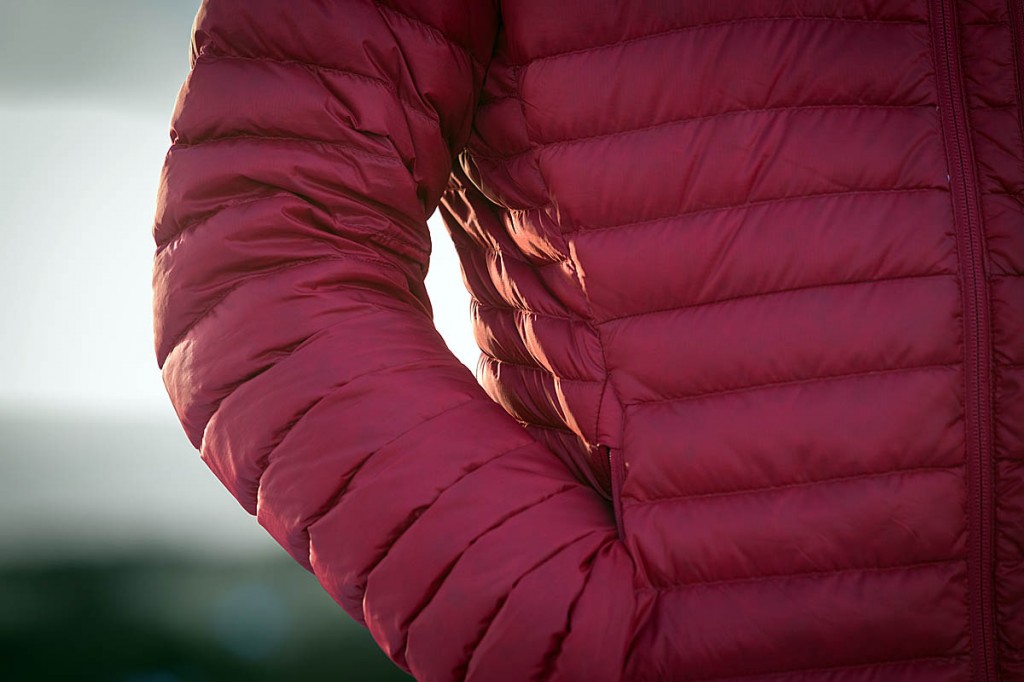
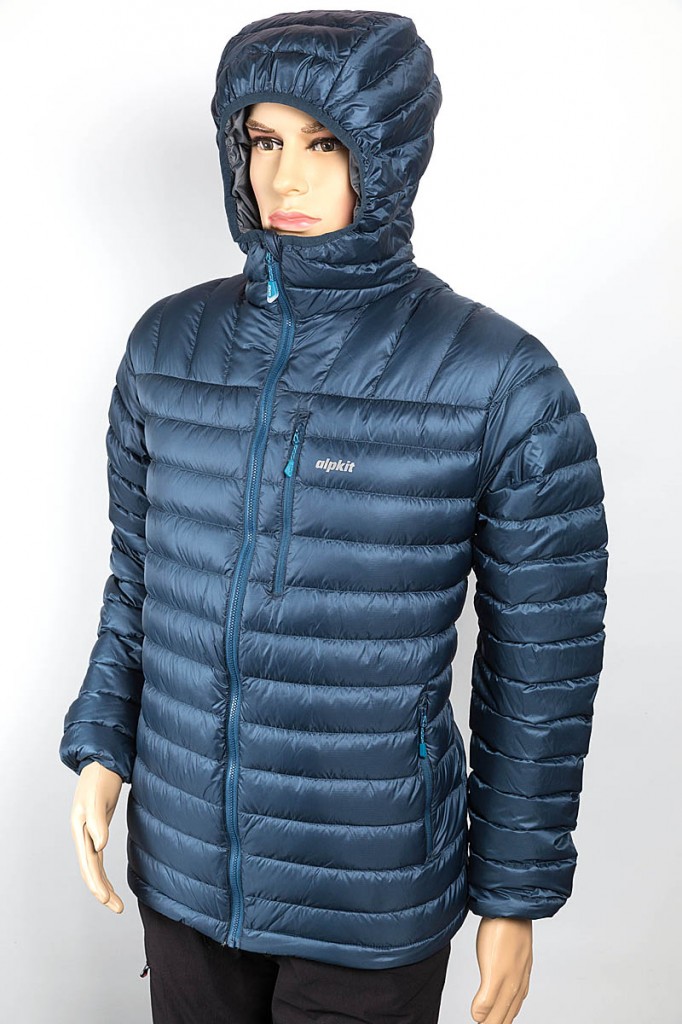

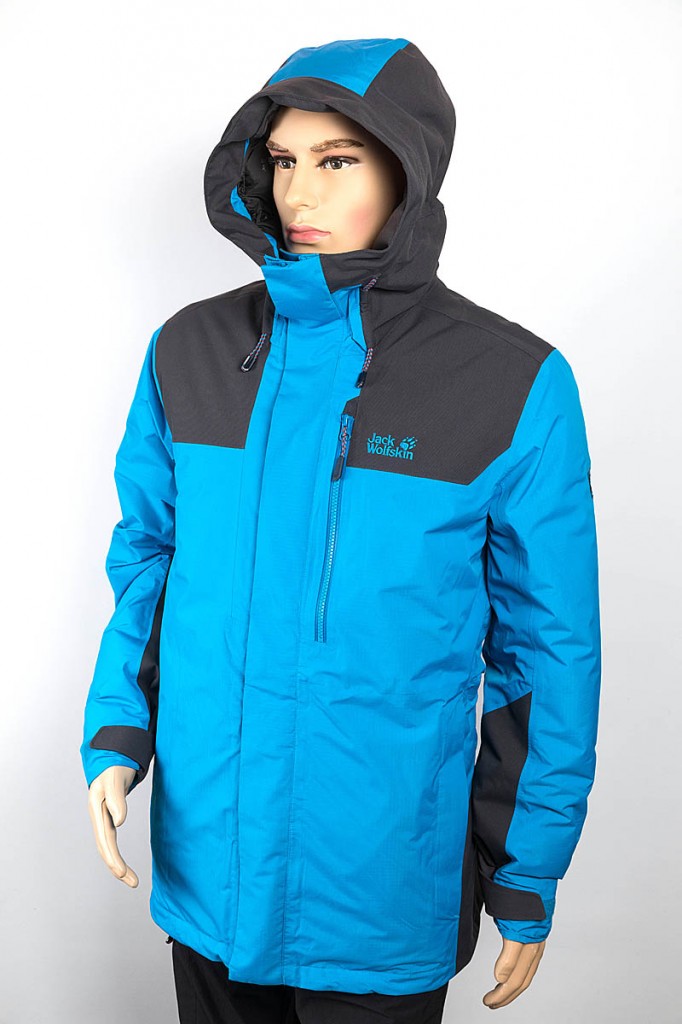
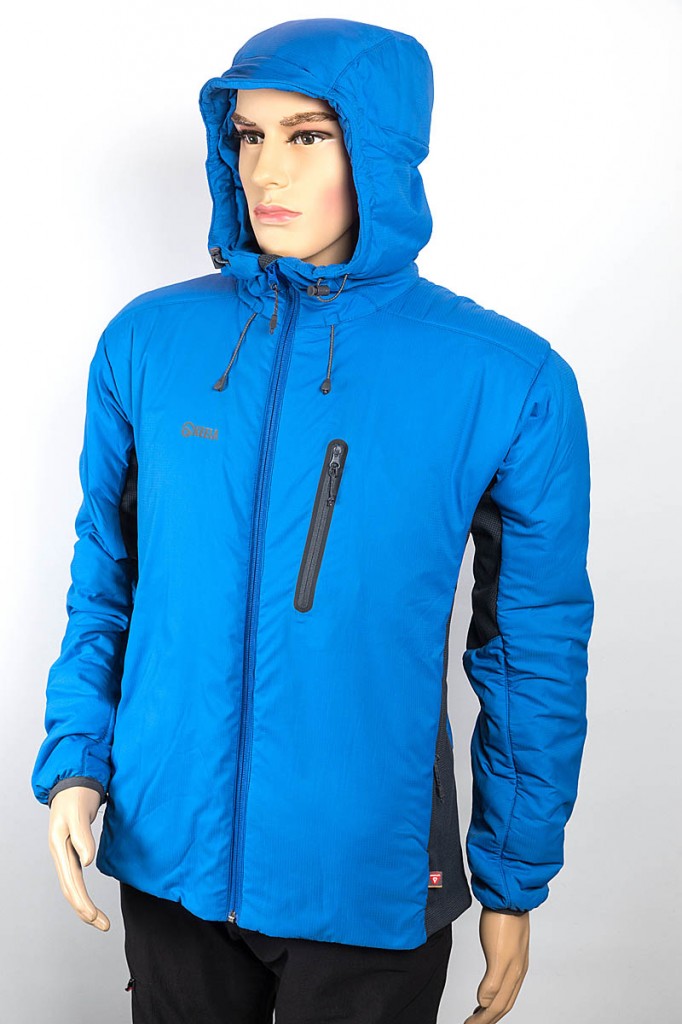
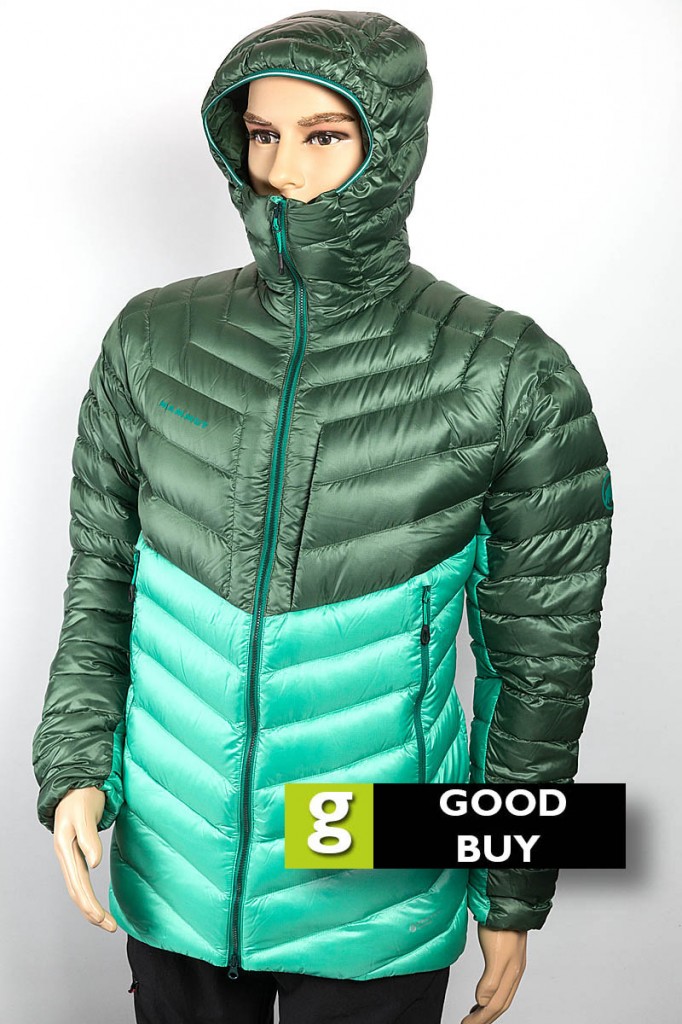
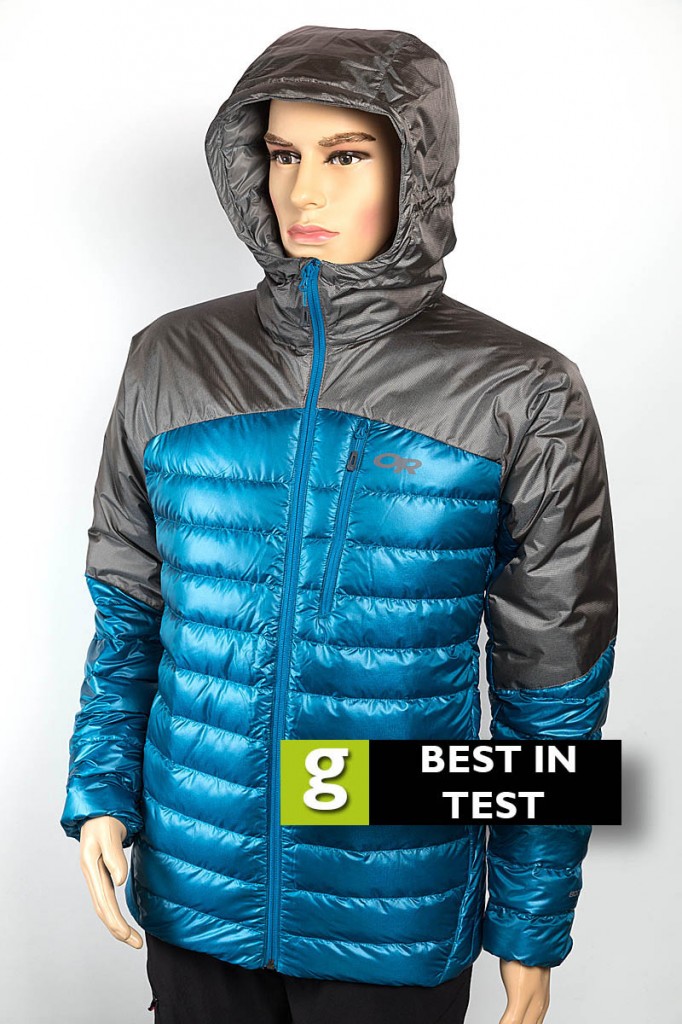
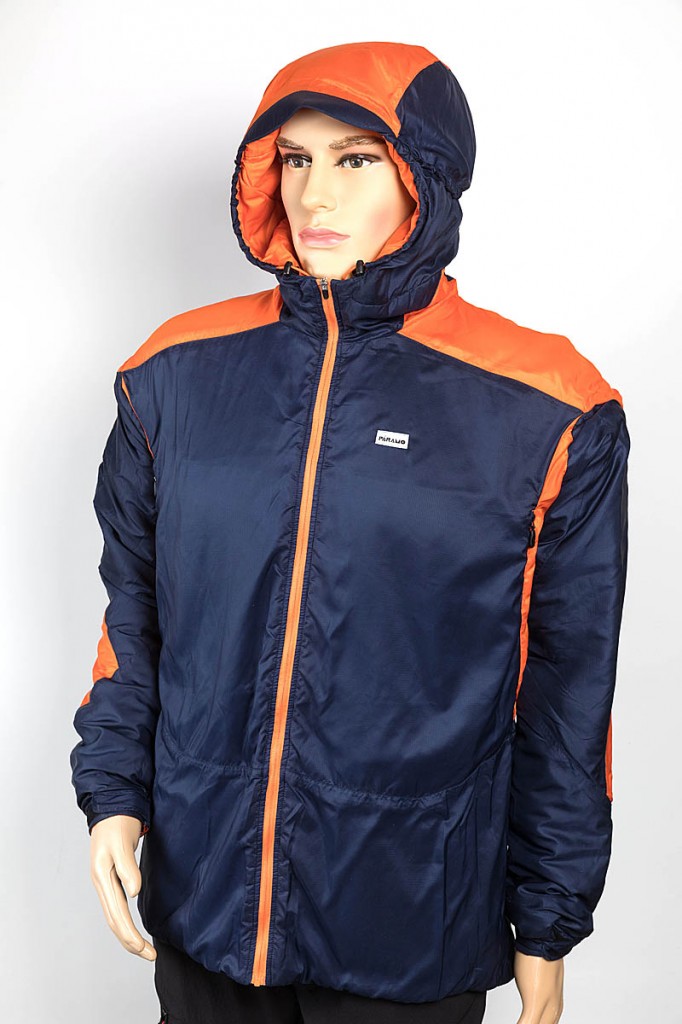
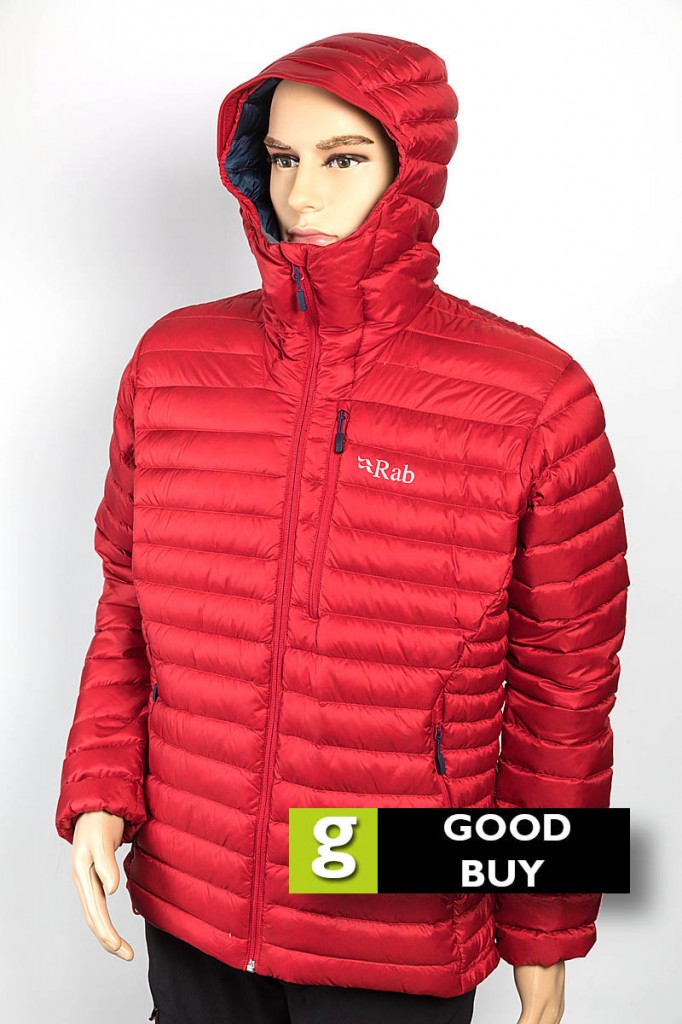
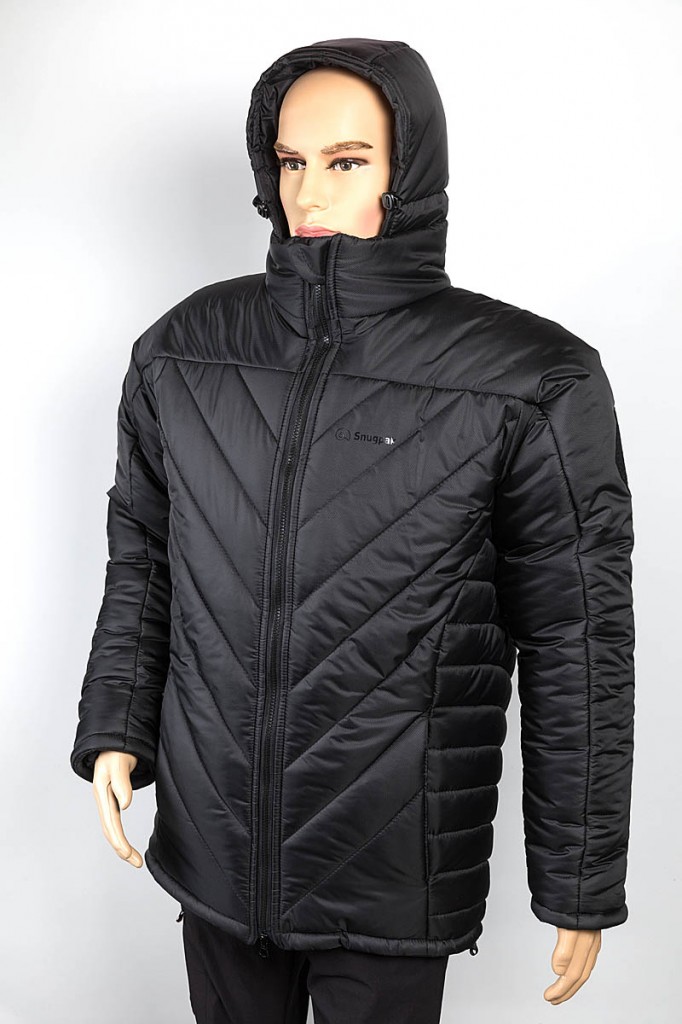
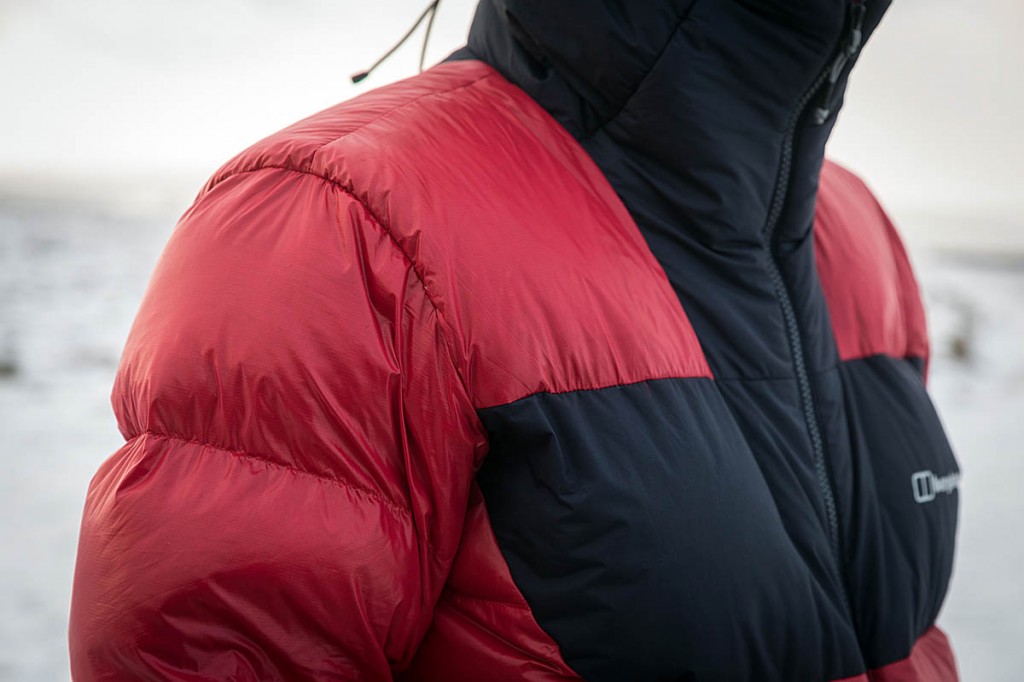
David
24 January 2021In the last ten or fifteen years, something weird has happened to a lot of outdoor clothing. It's all gone really narrow. So you can get a jacket with the right sleeve length, but it won't fasten, or if it does it's really too tight. Or you can get one which fastens but the sleeves are way too long. I'm the same weight and width I was years ago, so it's not me!
Same with other garments too. I can't fathom it. But it's annoying and a bit silly. There's nothing wrong with making clothing which is more sleek than it was years ago, but it's now gone too far.
Pete
25 January 2021Following on from what David says:
And, over the years jackets have gradually got shorter which is so annoying.
It's obvious the manufacturers do it so we buy waterproof trousers as well, but what's the point in making a waterproof jacket that barely come down to the top of your trousers.
Either designed by someone who never goes out in the rain or they're not too fussy about what the customer actually needs.
A shame really because the waterproof ability of outdoor clothes has improved a huge amount over the 40 years I've been buying them. They just make then the wrong shape these days.
David
25 January 2021Following on from what Pete says above:
Yes, the shorter length might be because of that. But maybe also because it's thought more fashionable.
The materials and the design in general of gear over the last forty or so years has improved vastly. It's very impressive. But I think it reached a peak around ten years ago, or a little longer. After that, to try to keep market share, each company had to come up with in my view novel and often pointless changes.
I'm still a bit frustrated that pile is now hard to come by. And even the normal, thick fleece isn't that common.
This thing about clothing being too narrow is that it's hardly mentioned by magazines and websites. Perhaps this is because of there's a close relationship between the industry and the media, and reviewers are apprehensive about making such fundamental criticisms. Just an idea.
Jeff Breen
06 February 2021I agree David pile is wonderful stuff. I still have two Helly Hansen pile jackets.( I stocked up just before they became unavailable) .Pile / Pertex garments such as Buffalo can still compete with the best out there today if you are not too style conscious that is.